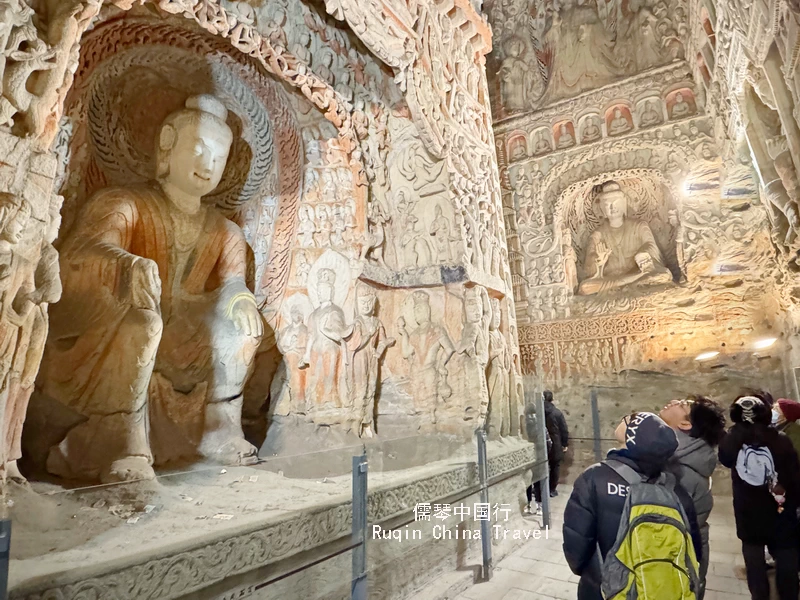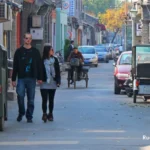Beijing to Datong High-Speed Train Day Trip? Yes, it’s possible—and it’s easy. Just hop on a high-speed train and in just under two hours, you’ll find yourself in one of China’s most historic cities. No need to rush or worry about complicated logistics.
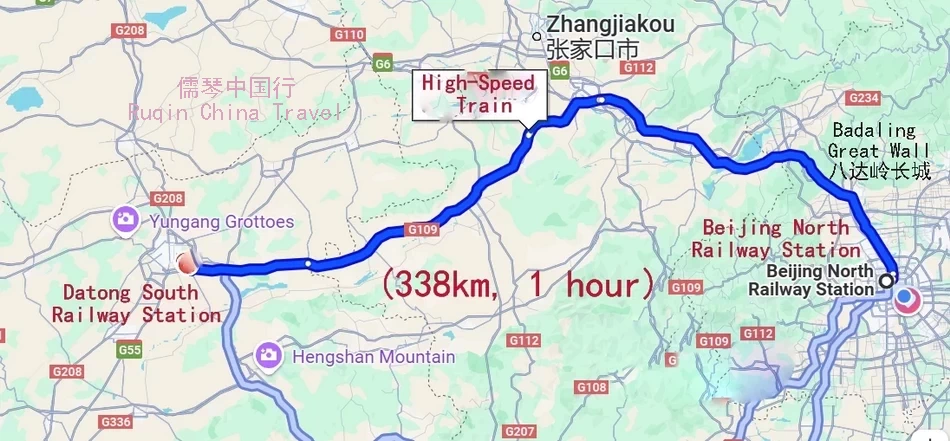
With a bit of planning, you can experience Datong’s ancient sites and rich culture in a single day. Ready to take the leap? Let’s dive into this DIY guide to “Beijing to Datong High-Speed Train Day Trip.
1. High-Speed Train from Beijing to Datong
The journey from Beijing to Datong by high-speed train is a breeze, and I opted for Beijing North Station as my starting point. There are high-speed trains departing from both Beijing North Station (北京北站) and Qinghe Railway Station (清河站). Some trains leaving from Beijing North Station even stop briefly at Qinghe Station. For me, the choice was easy—Beijing North Station is more convenient, as it’s directly accessible by subway with fewer transfers.
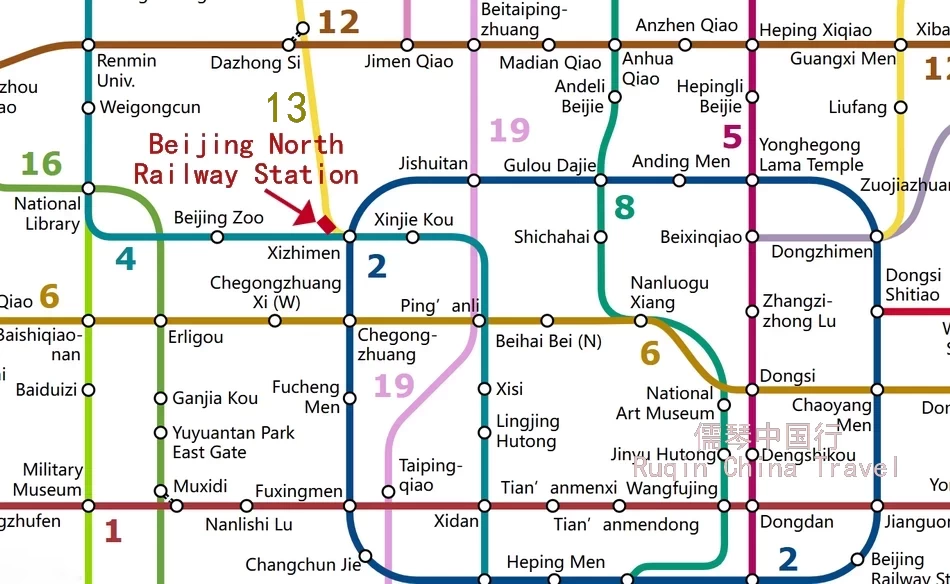
The distance between Beijing North Station and Datong South Station (大同南站)is 338 kilometers, which the high-speed train covers in just about two hours. Here’s how I navigated t my Beijing to Datong High-Speed Train Day Trip.
Getting to Beijing North Station
I started my day early, catching the subway at 5:41 AM from a nearby station. After one transfer for Subway Line 2, I arrived at Xizhimen Station, which connects directly to Beijing North Station.
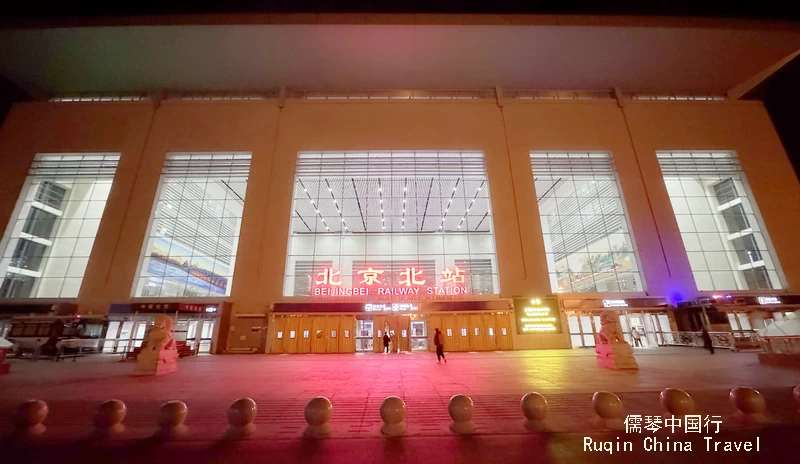
Following the signs, I made my way up to the surface level, where I saw the large building of Beijing North Station. Entering through the main entrance, I was greeted by the security check, which is mandatory for all passengers.
Beijing North Station
Inside the station, the first floor is the main waiting hall with ticket gates 1 through 4. There’s a giant screen displaying all the train departures, and I quickly located my train, G2515, which was departing from gate 5.
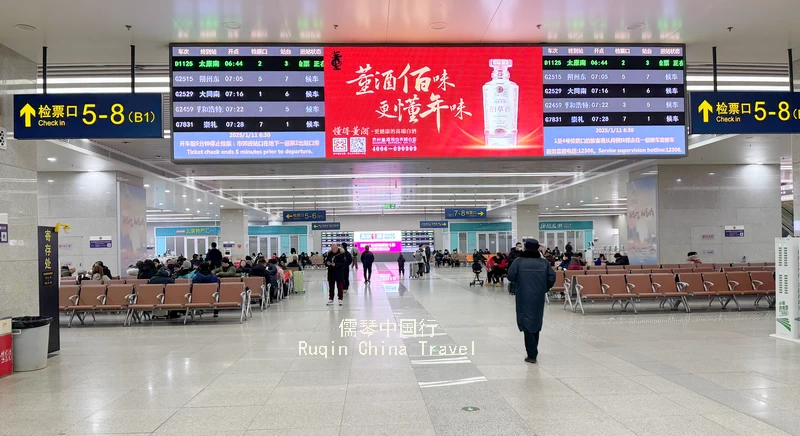
The Gate 5 is located on the lower fooor. The lower level also has a spacious waiting room, with gates 5 to 8. I took the escalator down to the lower level to find additional facilities, including automatic luggage lockers. These lockers require payment via WeChat QR code.
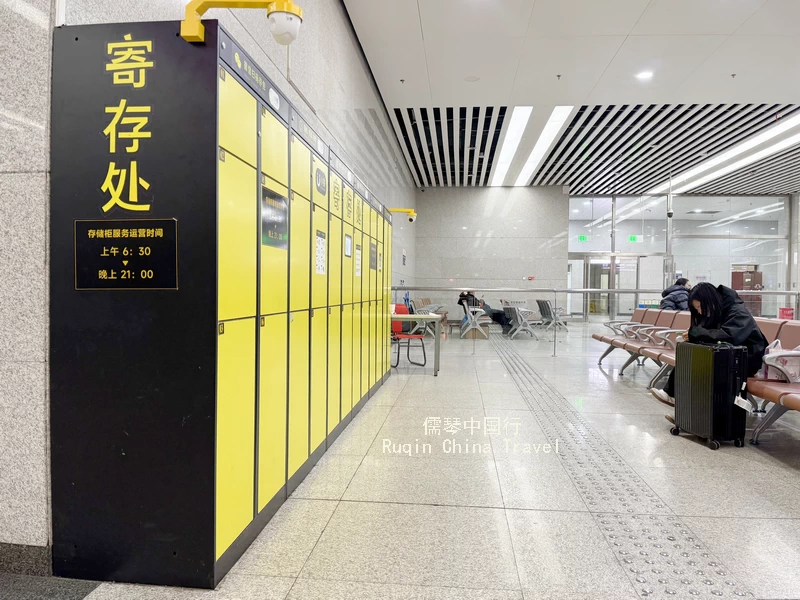
Both the first and second floors of the station feature ticket counters and vending machines for purchasing tickets.
Once my gate was announced, I lined up at the security checkpoint, where local passengers can use their ID cards to pass through quickly, while international travelers can show passports for manual inspection.
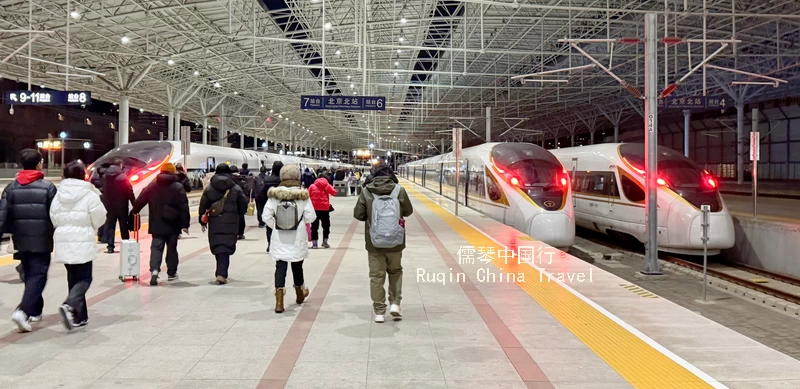
After passing through security, I took the escalator down to the platform on the ground floor. There, I could see the sleek, modern train awaiting me under the station’s large canopy. The train, consisting of 16 carriages, was relatively empty since it was an early-morning departure. I made my way from carriage 16 to the first one, where I found my seat.
Train Facilities and Stops
Inside the train, there are restrooms at both ends of the carriages and hot water dispensers for tea or instant noodles. Throughout the journey, attendants roll through the aisles selling drinks, including coffee, which can be heated on request. The entire ride is announced in both Mandarin and English, which makes it easy to follow along.
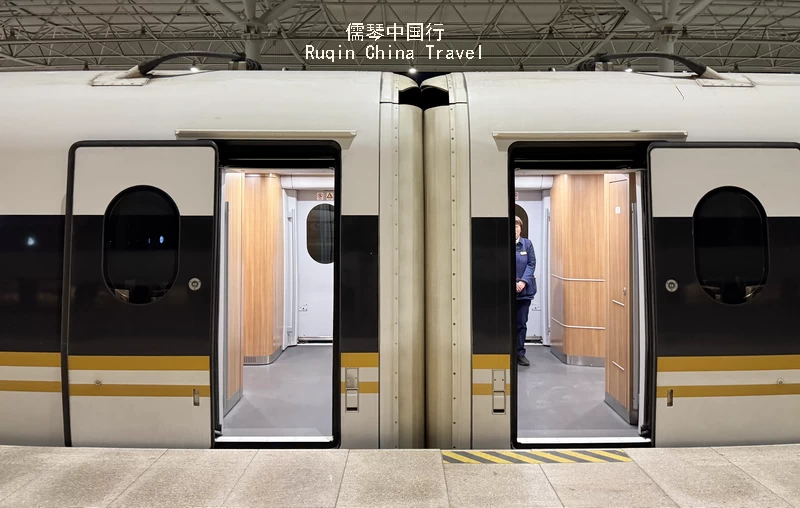
The train makes a few key stops along the way, including at the famous Badaling Great Wall station. This station holds the title of being the deepest train station in the world, and it’s quite a sight to see. Some passengers disembark here to explore the Great Wall. The second stop is Zhangjiakou, a renowned ski resort in China, where winter sports enthusiasts often board or disembark.
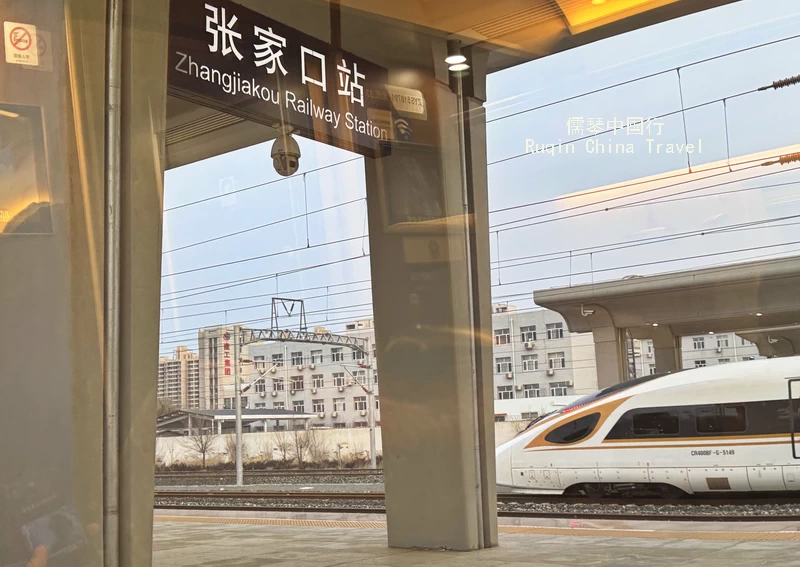
One thing to note: most of the high-speed trains to Datong are transit trains, so the departure boards in the waiting room often display train routes to other cities. However, as long as you know your train number and departure gate, there’s no need to worry.
The journey itself was smooth and comfortable. I enjoyed the relaxed atmosphere and the convenience of modern amenities, making it easy to focus on the beauty of the countryside as the train zoomed past.
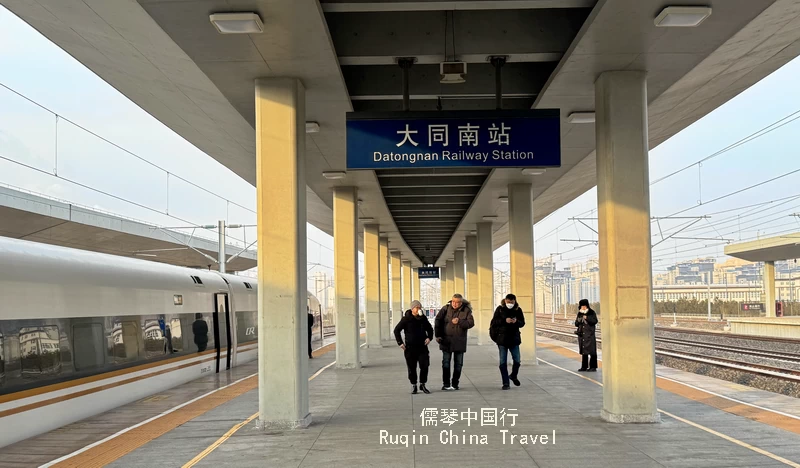
By the time I reached Datong South Station (大同南站), I was ready to begin my exploration of the city’s ancient treasures, knowing that this smooth, quick trip could easily become a go-to for future adventures.
2. Datong South Station to Yungang Grottoes
After arriving at Datong South Station, I followed the signs to the bus transfer Terminal, where I found a special tourist shuttle bus to the Yungang Grottoes. There are five departure platforms at the Terminal, and the shuttle to Yungang departs from Platform 5.
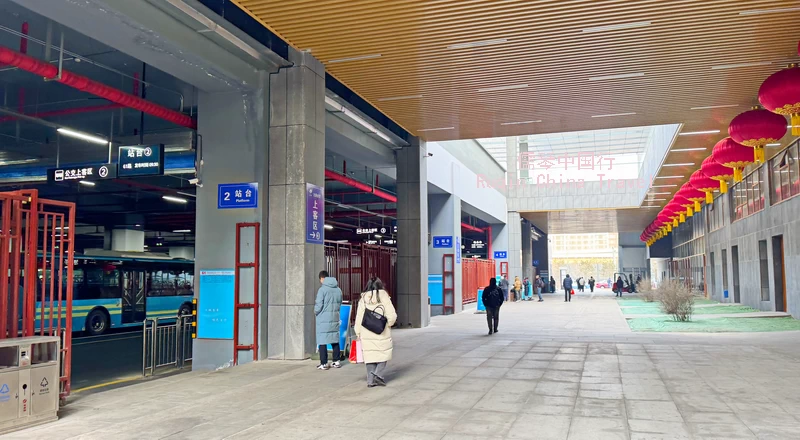
For those who prefer a more direct route, taxis are also available, with the fare to the grottoes costing around 60 yuan.
Tourist Bus to Yungang Grottoes
At 9:40 AM, the tourist bus arrived, and I quickly boarded to buy my ticket for just 10 yuan. The bus ride covers 30 kilometers, taking about 46 minutes. Yungang Grottoes is located 17 km west of the ancient city of Datong, while Datong South Station is 13 kilometers south of the city center.
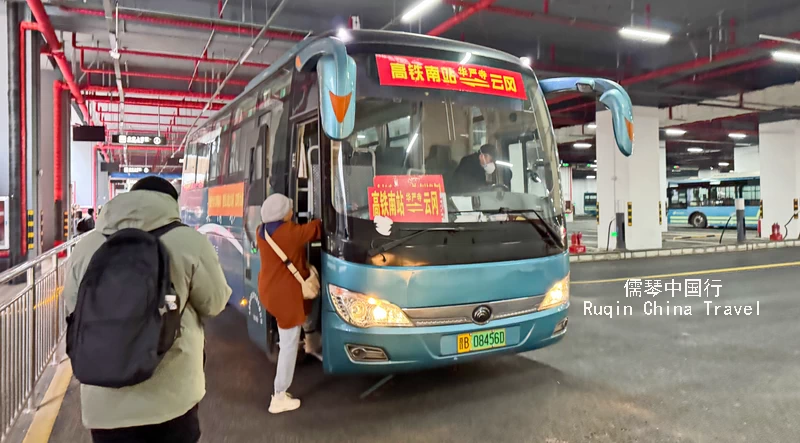
The bus route passes by several significant landmarks in the ancient city, including Fahua Temple, Nine-Dragon Screen and Huayan Temple. It’s a pleasant ride that provides glimpses of Datong’s historical richness.
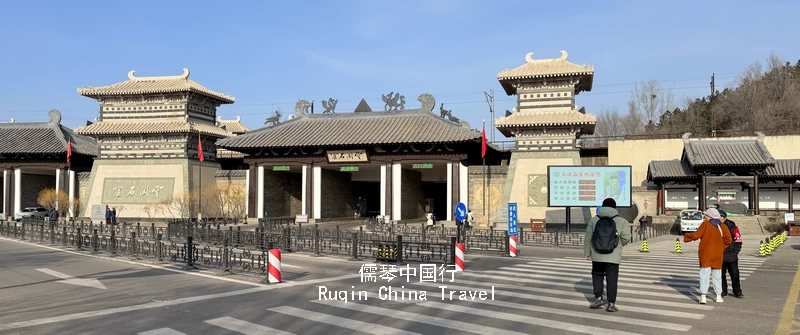
After about 46 minutes, the bus pulled up near the huge tower gates of Yungang Grottoes, and I was excited to finally be here. You still have a 5-minute walk from the tower gates to the tourist center ( ticketing and the entrance).
Exploring the Yungang Grottoes
Before entering the grottoes, you need to buy a ticket. Walking from the entrance to the grottoes takes about a 20-minute. Alternatively, you can take a battery-powered shuttle to the grottoes for just 10 yuan.
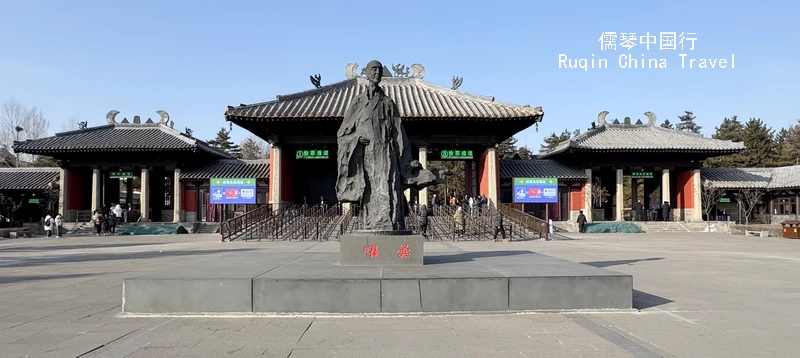
Starting January 1, 2025, the Yungang Grottoes implements a new online reservation system for visitors, requiring real-name booking for all tickets. On-site ticket sales will be discontinued. The maximum daily capacity of the site will be 46,250 visitors, with an instantaneous peak capacity of 14,453.
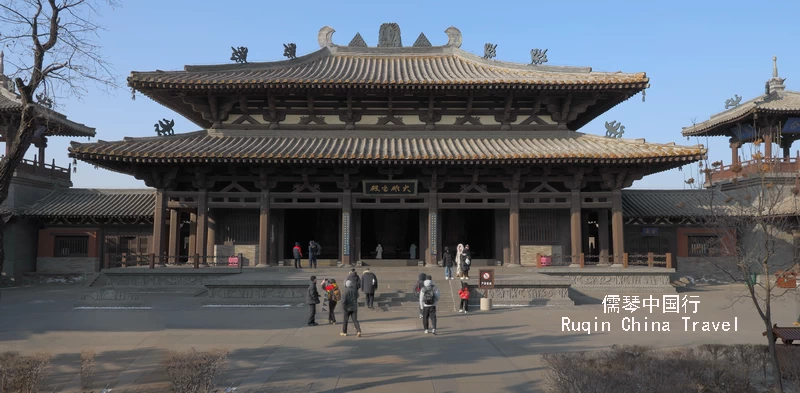
I had visited Yungang Grottoes several times before, and in the past, it was possible to walk straight to the caves. However, during my today’s visit, I noticed that several large temples had been built between the entrance and the grottoes themselves. I suspect the aim was to enrich the experience, but the new temples felt somewhat hastily built and didn’t add much value to the visit. I decided not to spend too much time there.
One of the perks of visiting during the off-season is the discounted ticket prices and fewer crowds. This made it much easier to take my time and appreciate the intricate carvings. I had heard that during peak season, long lines form in front of each grotto, which can make it hard to enjoy the details.
53 major caves in the Yungang Grottoes
I started at the easternmost grotto and slowly made my way westward, taking in each site one by one.There are 53 major caves, each housing intricate Buddha statues, and over 51,000 niches, all carved into the rock.
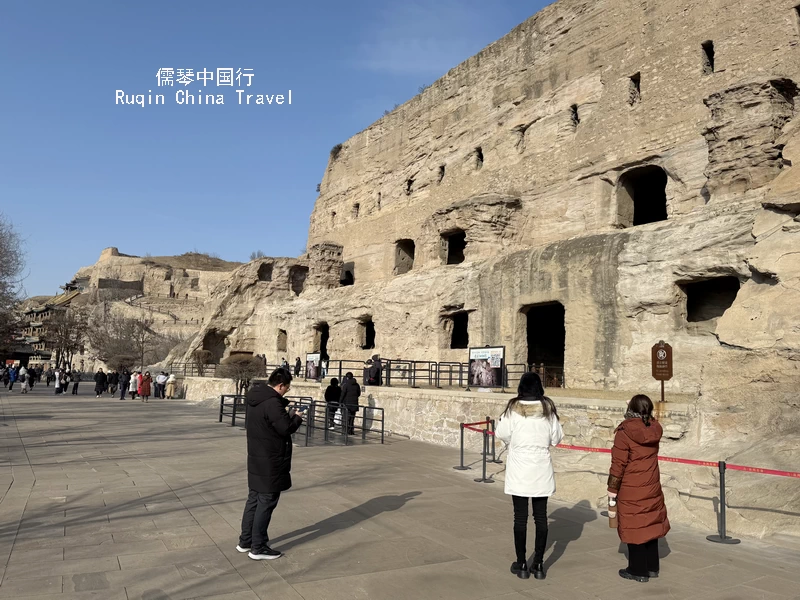
I made my way from one cave to the next, each more impressive than the last. The diversity of the carvings, ranging from small, serene Buddhas to towering, detailed figures, was nothing short of breathtaking.
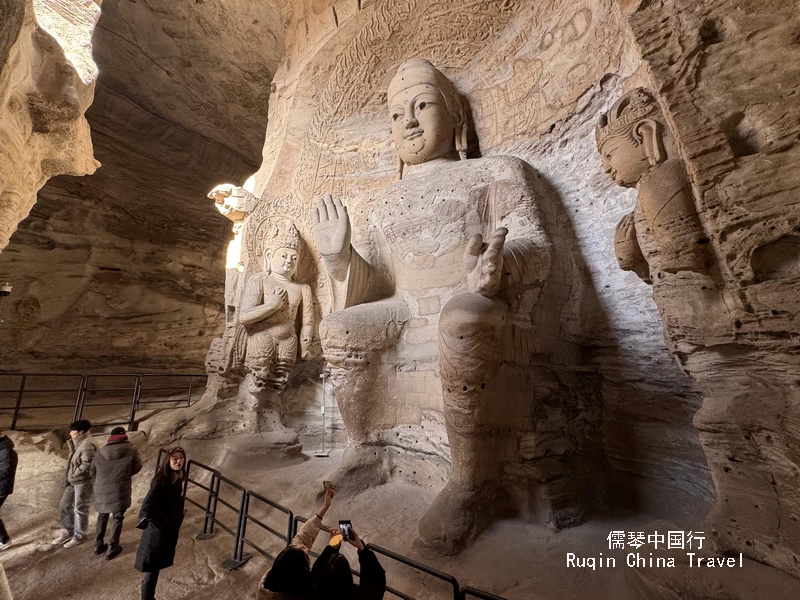
As I walked, I marveled at the craftsmanship that has withstood the test of time. The air was thick with history. The caves are scattered along the cliffside, and each one seemed to tell its own story. Some caves contained massive statues, while others were home to smaller, more delicate representations.
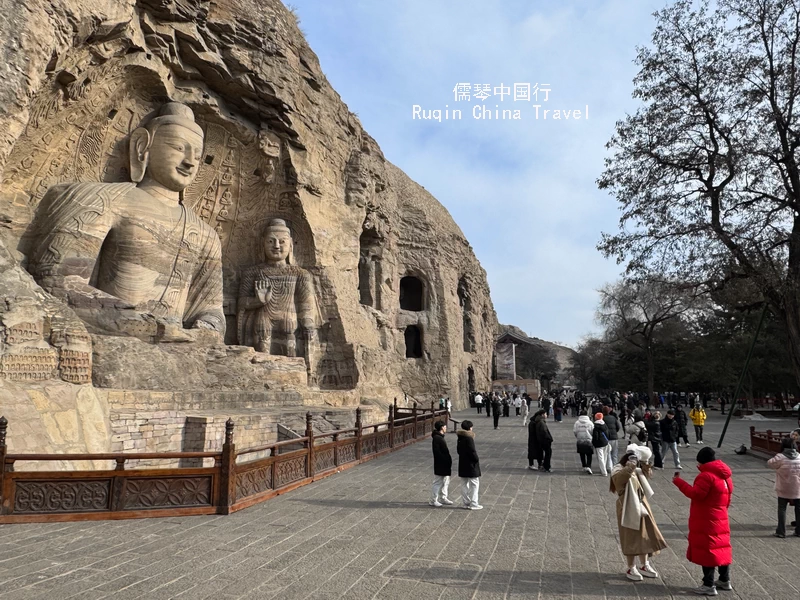
Though there are around 1,100 minor caves spread throughout the grottoes, it was the major caves that truly captured my attention. These larger caves housed not just statues, but entire murals and scenes from Buddhist teachings. I spent 2 hours wandering from one to another, lost in the intricate details and the serene atmosphere.
3. Yungang Grottoes to Datong Ancient City
After my visit to the Yungang Grottoes, I didn’t have to retrace my steps. Instead, I followed the main road directly in front of the Great Buddha (Cave 20), guided by the clear signs pointing toward the exit. For those in a hurry or wanting a more comfortable ride, there’s also an electric shuttle available for just 10 yuan, taking you straight to the exit.
Lunch at He Yang Ju Restaurant
By the time I reached the bus station, I found that the tourist shuttle bus hadn’t arrived yet. So, I decided to grab a taxi to the ancient city. The fare was about 35 yuan. I was getting a bit hungry, so I asked the driver to take me to He Yang Ju Restaurant (和阳居), located on He Yang Street (和阳街) within the city wall of Datong. This place is known for its delicious braised pork, and I was eager to try it.
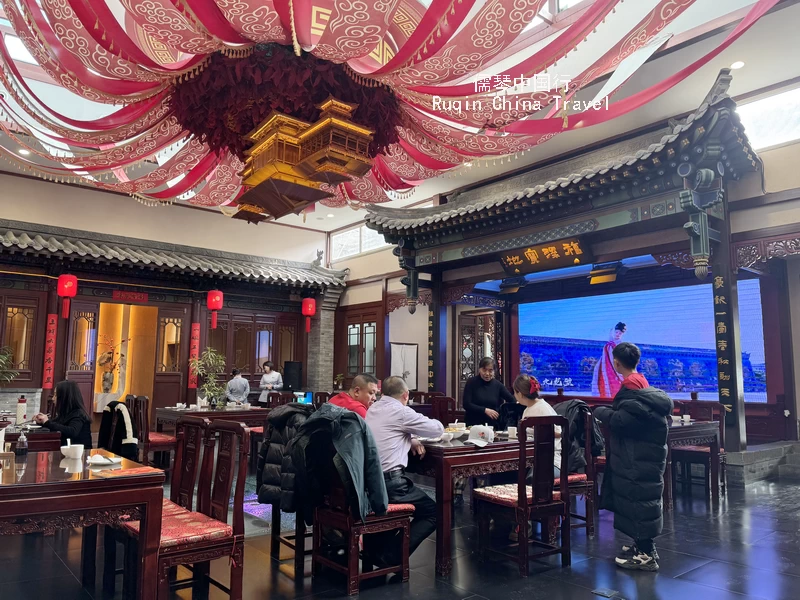
It was a cold winter day in Datong, with temperatures dropping to a chilling -4°C during the day and plummeting to -17°C at night. As I entered the warm restaurant, the cozy atmosphere was a relief from the harsh cold outside.
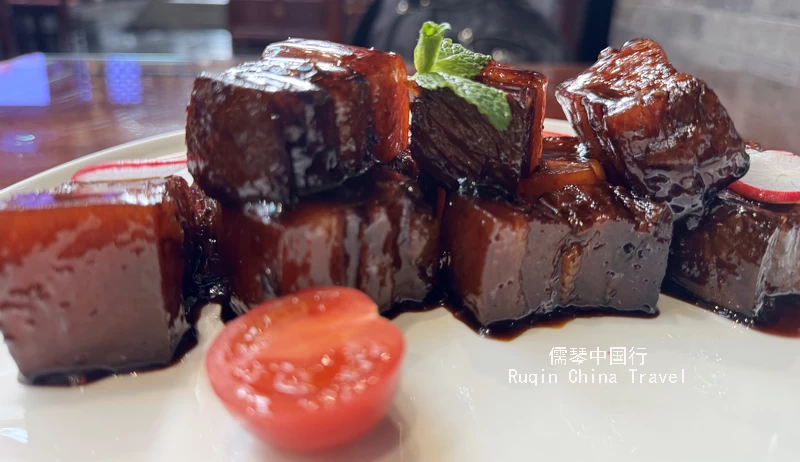
I ordered a bowl of hot and sour soup to start, followed by the famous braised pork and a plate of leafy green vegetables. The braised pork didn’t disappoint—it was perfectly tender, with just the right amount of fat, rich but not greasy.
After the meal, I asked the waiter to fill up my thermal cup with hot water, a small yet comforting touch on such a frigid day.
4. Exploring Datong Ancient City
Datong Ancient City is a place where history comes alive at every corner. The streets, lined with traditional architecture, lead you through centuries of history. The old city is rebuilt and some well-preserved, offering a glimpse of what life was like in this once-thriving capital of northern China.
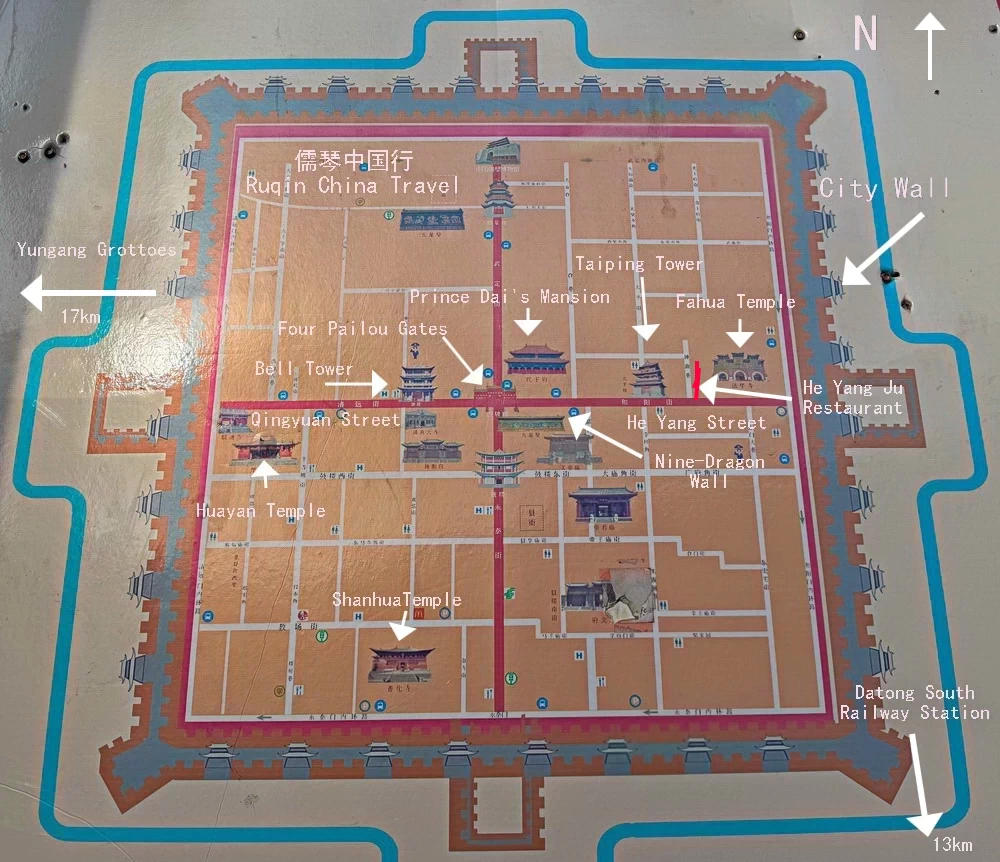
Fahua Temple
After a hearty meal at He Yang Ju, I made my way to Fahua Temple. This historic site is located just east of the restaurant. The temple’s serene atmosphere and beautiful architecture made it the perfect stop.
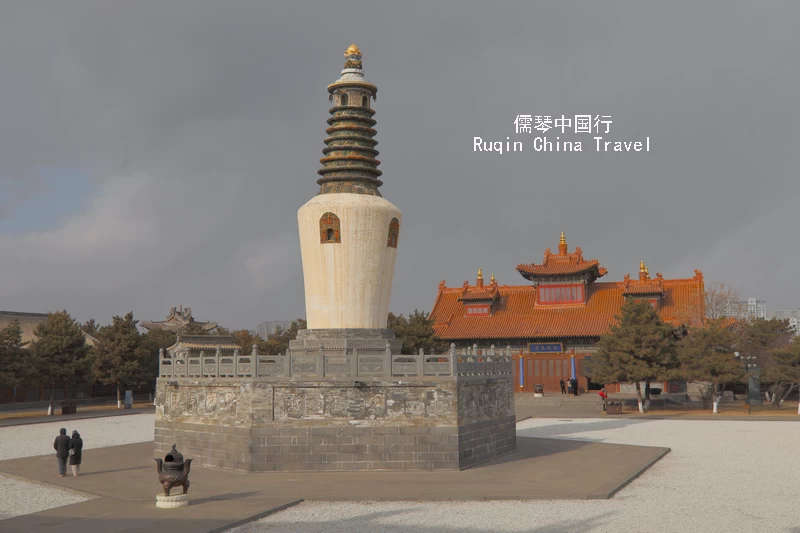
At the heart of Fahua Temple stands the White Pagoda, also known as the Fahua Pagoda. It is the only existing fubao style, glazed Lama pagoda in Datong.
Entrance Fee: Free of charge
Jiulong Wall (Nine-Dragon Screen)
Continuing west along He Yang Street, I soon arrived at the iconic Jiulong Wall (九龙壁 Nine-Dragon Screen ). This stunning structure, known for its nine dragons, is a marvel of traditional Chinese craftsmanship.
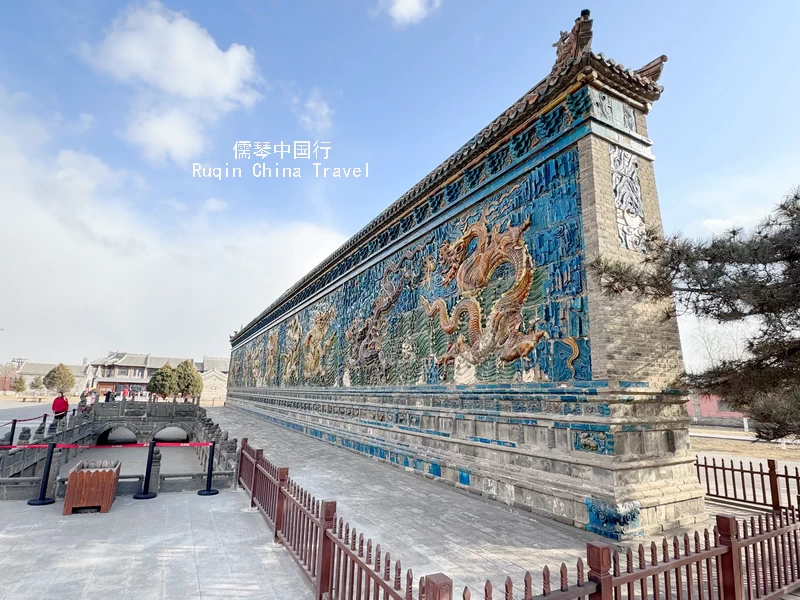
This stunning single-faced, multi-colored glazed tile wall is located in front of the Prince Dai Mansion, built by Zhu Gui, the thirteenth son of Ming Emperor Zhu Yuanzhang. Constructed during the late years of the Hongwu reign (1392–1396), the wall has stood for over 600 years, making it one of the oldest and largest remaining Jiulong Walls in China.
Entrance Fee: free of Charge
Prince Dai’s Mansion
Next, I walked towards the Prince Dai’s Mansion (代王府), located just in front of the Jiulong Wall. This historical residence, once home to a royal family, is a grand example of ancient architecture.
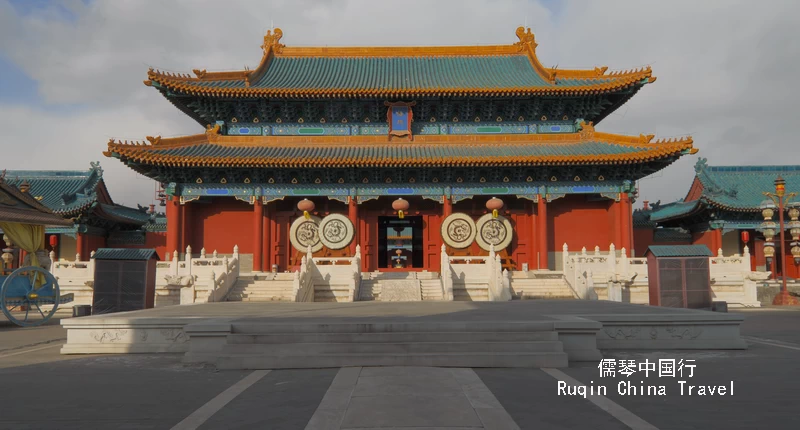
The mansion’s beautiful layout and historical significance made it an interesting place for anyone exploring the ancient city of Datong. In my opinion, Dai’s Mansion is not worthy to visit since it is totally rebuilt!
Entrace Fee: RMB50.
Four Pailou Gates (Four traditional Chinese archways )
After visiting the mansion, I headed west and soon reached Four Pailou Gates (四牌楼 , or the Four Arched Gates, in the heart of Datong’s ancient city.
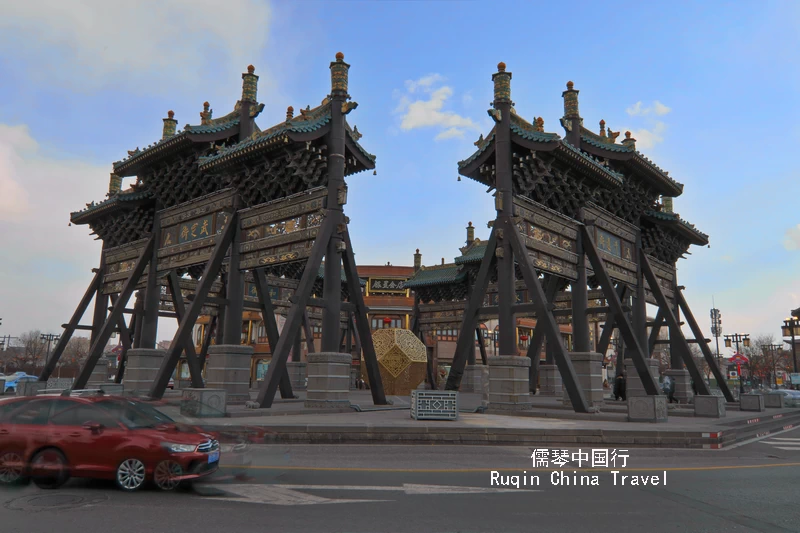
These four majestic gates mark the center of the old city and are aligned along the north-south axis. Standing there, I could feel the weight of history as the gates silently watched over the passage of time.
Zhonglou (Bell Tower)
Beyond the Four-Arched Gates, the road turned into Qingyuan Street (清远街), leading me towards Datong’s Bell Tower.
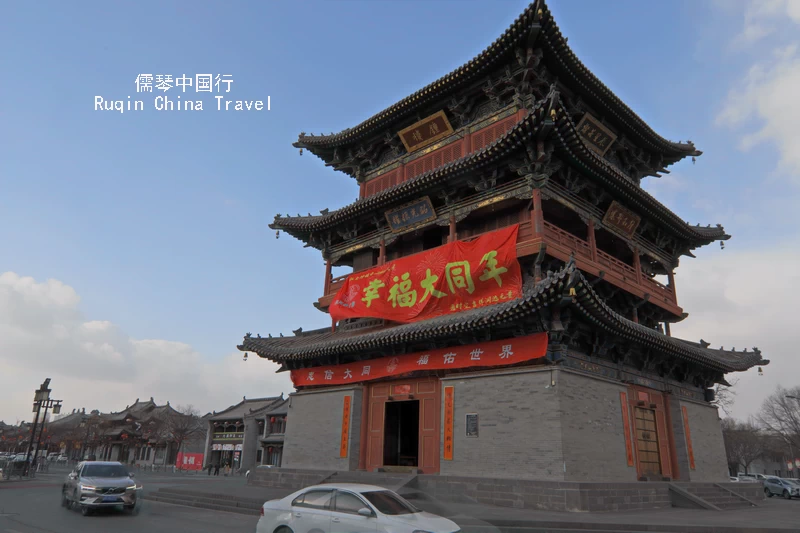
The bell tower, standing proudly in the city center, is one of Datong’s key landmarks. I admired its towering structure and the role it has played in the city’s history, a symbol of both time and tradition.
Huayan Temple
Finally, I reached Huayan Temple, one of Datong’s most important cultural landmarks, located at 459 Xiasepo Street (下寺坡街459号). Originally built in the 8th year of the Qingning era of the Liao Dynasty (1062), it is one of the oldest and best-preserved Liao-Jin temple complexes in China. It is also one of the three major Liao-era temples still standing today.
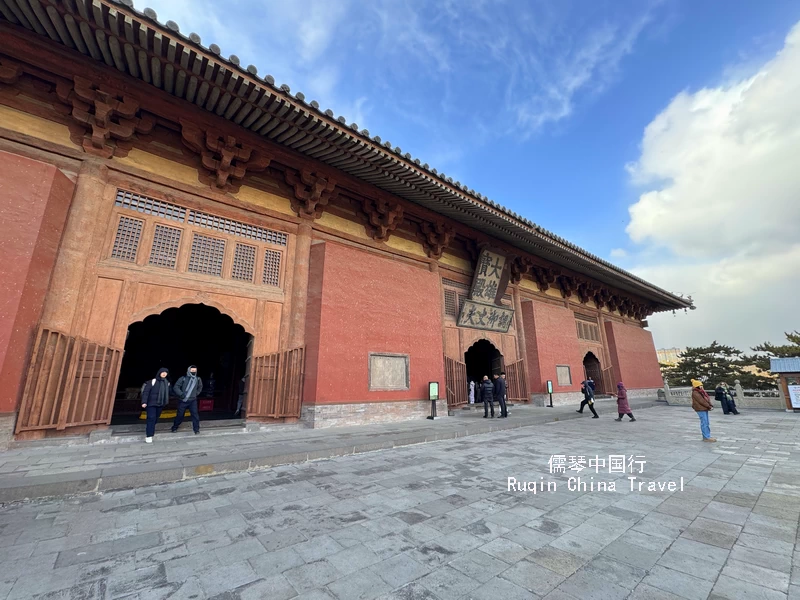
The temple’s layout follows an east-west axis, covering a vast area of 66,000 square meters. The entire complex is divided into two sections: the upper temple and the lower temple. The upper temple centers around the grand Daxiong Baodian Hall, while the lower temple is dominated by the Boddhisattva Sutra Hall. While the two main halls date back to the Liao-Jin period, the rest of the buildings were rebuilt during the Qing Dynasty.
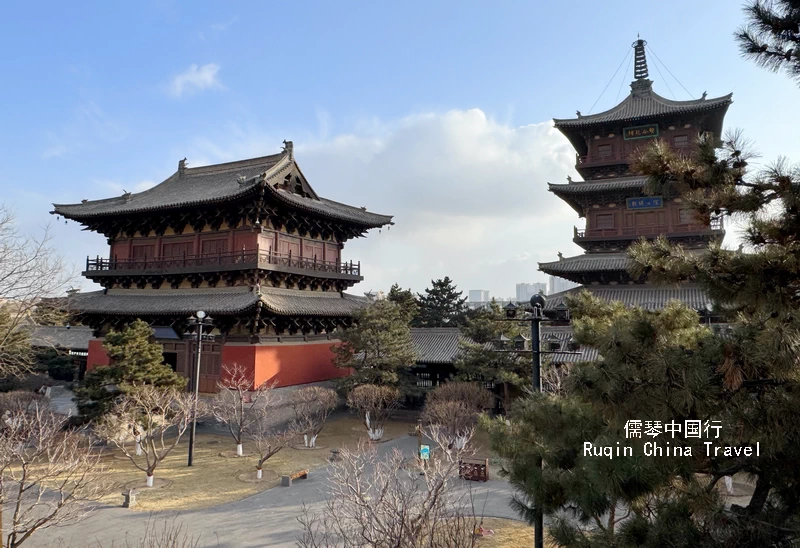
As I walked through the temple grounds, I couldn’t help but feel the deep history that these ancient walls and structures carry, each stone and carving telling stories of a bygone era. It is one of the highlights of my Beijing to Datong High-Speed Train Day Trip.
The full ticket price for Huayan Temple is 80 yuan.
Children under 1.2 meters in height can enter for free
Seniors aged 60 and above can also visit for free with a valid ID.
5. Datong Ancient City to Datong South Station
After soaking in the sights of Datong Ancient City, I made my way to Qingyuan Street, where I hailed a taxi using the Gaode app. The drive to Datong South Station was smooth, and within about 20 minutes, I arrived at the station.
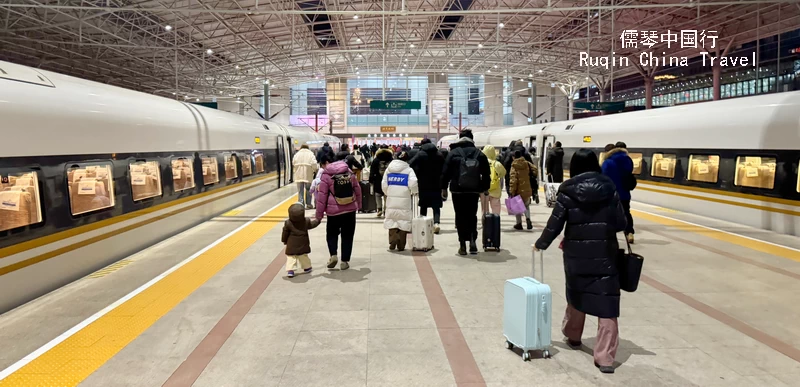
From there, I boarded my high-speed train back to Beijing. The efficient train ride was a perfect end to Beijing to Datong High-Speed Train Day Trip, allowing me to relax and reflect on my adventure in this ancient city. The journey was quick and comfortable, and soon enough, I was heading back to the hustle and bustle of Beijing.
6. Datong Travel Tips
- Alternative Travel Options: While the high-speed train is a popular choice, you can also fly to Datong or take a long-distance bus. Each option has its own charm, depending on your schedule and preferences. Chek out: How to Get from Beijing to Datong (Your Complete Guide).
- Visiting Suspended Temple and Yingxian Wooden Pagoda: If you’re planning to visit the Hanging Temple and the Yingxian Wooden Pagoda, it’s best to hire a car for a day trip the following day. Afterward, the driver can take you directly to Datong South Station. If you’re catching a high-speed train back to Beijing on the same day, it’s recommended to book a later train. If you arrive early, you can always change your ticket at the Datong South Station ticket office for an earlier departure.
- For an Overnight Stay: If you decide to spend the night in Datong, make sure to visit the city walls for a stunning view of the night skyline. Datong’s night view is truly breathtaking, with the illuminated cityscape offering a unique perspective of the ancient city.
- Datong Cuisine: Don’t miss out on Datong’s local food. The city offers a variety of delicious dishes, from hearty stews to flavorful snacks. Make sure to try some of the local specialties before you leave. The culinary scene in Datong is as rich as its history, making for a complete travel experience.
🏔️ Datong: Yungang Grottoes & Hanging Temple Day Trip from Beijing
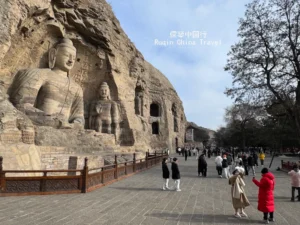
Take a high-speed day trip from Beijing to Datong and discover two jaw-dropping historical treasures in one unforgettable day.
You’ll explore the majestic Yungang Grottoes—a UNESCO World Heritage Site carved with over 50,000 ancient Buddhist statues—and the gravity-defying Hanging Temple, built into a sheer cliff face and ranked among the world’s top 10 most dangerous buildings. 🏯✨
Everything’s organized for you, from bullet train tickets to lunch and local transport—so all you need to do is enjoy the ride.
👉 Book Datong Day Trip from Beijing Now!
✅ What’s Included
- 👨🏫 Professional English-Speaking Guide in Datong
- 🚗 Round-Trip Transfer from Your Beijing Hotel to Beijing Railway Station
- 🚄 High-Speed Bullet Train Tickets (Beijing ↔ Datong)
- 🎟️ Entrance Tickets to All Listed Attractions
- 🚉 Datong Railway Station Pickup & Drop-Off
- 🚘 Private Car Service in Datong for the Full Tour

